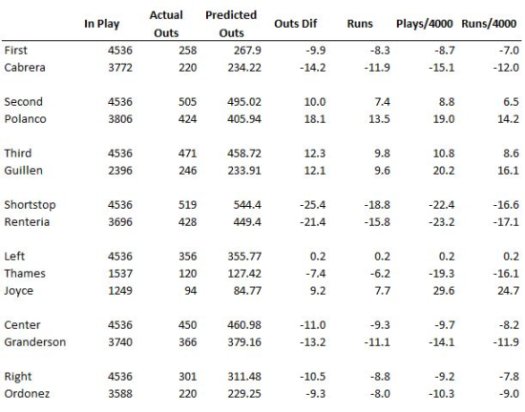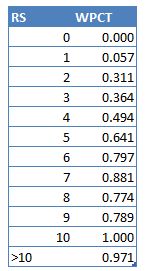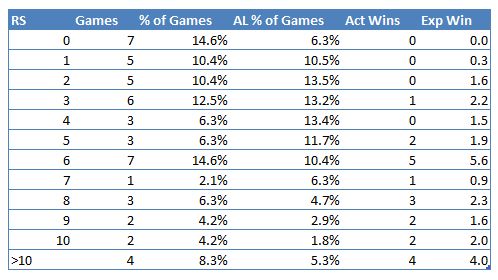The following was compiled by DTW reader and commenter Sam Hoff. He breaks down the season into 18 game innings and reports how the team does.
The 2nd Inning is over.
Each 18 games represent 1 inning of a baseball season. The Tigers record for the first 2 innings in 2008:
Starters: Bullpen:
W-L RS –RA HR-SB-AVG/OBA/SLG W-L-IP- ERA W-L-S-ERA
1: 6-12 74 -112 15-10-262/345/404 3-9- 96.2-5.96 3-3-3-5.28
2: 9-9 98 -87 21- 6-261/350/426 5-8-105.2-5.11 4-1-2-3.61
The first 2 innings have been ugly. The team has endured a 7 game and a 5 game losing streak. The offense, whose initial starting lineup has an average lifetime BA of .297 is hitting 35 points below that collectively. The starters, 60% of who are left from the 2006 World Series team which lead the major leagues in ERA has collective ERA well over 5 with the best performance coming from an 8-year minor leaguer.
The good news is that the team is only 3.5 games out of first and if they play near their career norms should be able to easily make that up. In 2006, the Tigers last 3 innings were 9-9, 5-13, and 9-9 and that team went to the World Series. In 2007, the Tigers had 2 successive 7-11 innings (innings 6 and 7). In 2003, you couldn’t piece 2 innings together where the Tigers had as many as 15 wins!
The bullpen had a very good 2nd inning lead by Bobby Seay (5 scoreless innings), the departed Jason Grilli (4 scoreless) and Clay Rapada (1.59 era in 5.2 innings). The only member of the bullpen with an era over 5.00 was Denny Bautista (8.44era in 5.2 innings).
The starters were consistent as each of them had exactly 1 win. Galarraga (1-1-3.18) and Bonderman (1-1-3.93) were respectable. Rogers (1-0-6.19), Robertson (1-3-6.38), and Verlander (1-3-5.84) all really struggled. Verlander is a big concern as he has never looked this bad in his career and rumors are circulating that his shoulder is hurting.
The highest OPS in the 2nd inning belonged to Ramon Santiago (1-8-312/421/750) in 16 At Bats! Marcus Thames (1-4-412/444/588), Polanco (2-8-383/422/583), Granderson (5-10-254/362/593) and Ordonez (4-17-324/397/544) have all been hot. The guys who struggled in the 2nd inning were Inge (1-4-154/292/231), Guillen (0-8-246/333/281), and the departed Jacque Jones (1-2-146/265/317).
It is NOT time to hit the panic button. The Yankees started 21-29 last year and made the playoffs. The team definitely needs to start playing better baseball and the biggest disappointment, the starting pitching, needs to get better. Here’s hoping it does, otherwise when the Wings and Pistons are over, all we will have to look forward to are the Lions???


